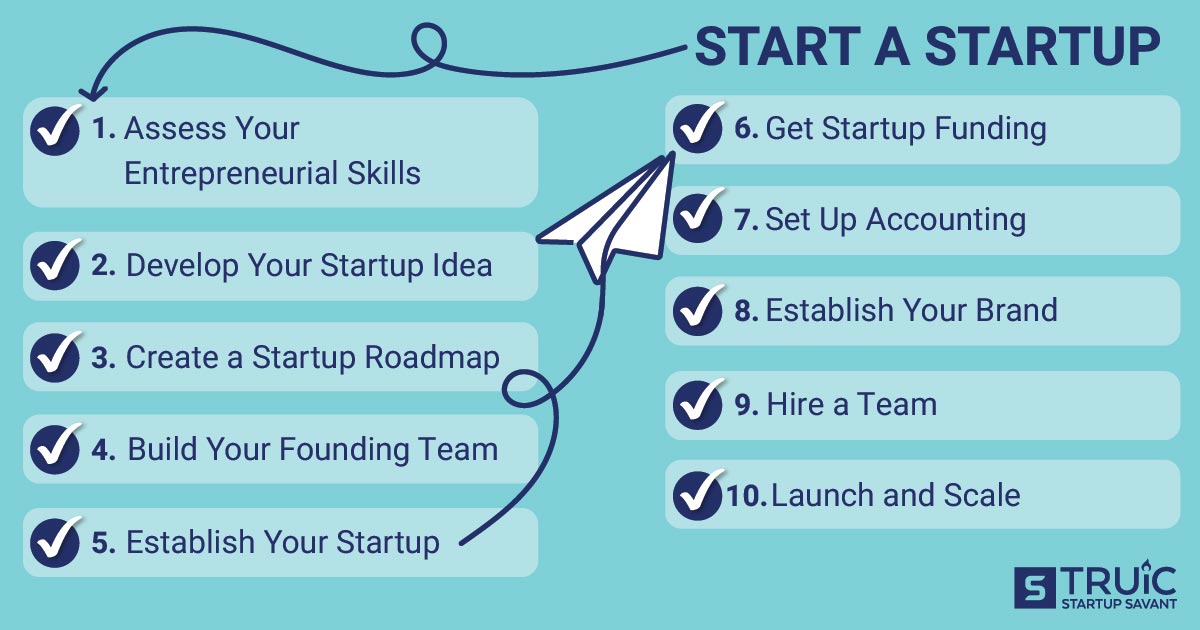
Launching a startup requires meticulous planning and execution across various stages. Here’s a comprehensive guide on the steps involved in this journey, synthesized from multiple sources.
Identify the Problem
The first and most essential step is to identify the problem your startup aims to solve. This involves articulating the pain points of potential customers rather than jumping straight to the solutions. For instance, when Netflix was conceived, the problem wasn't just about delivering movies but also about addressing the high cost of cable and limited viewing options available through traditional television[2]. Understanding the problem better will also guide your marketing and product development efforts.
Conduct Market Research
Before moving forward, it's vital to perform thorough market research. This includes understanding competitor offerings and how your idea differentiates from existing solutions. Investigate what current solutions resonate well with customers and explore gaps that could be filled by your product[3].
Interviewing potential customers and industry experts can provide insights into the issues facing your target market. For example, learning from those who’ve previously worked in your target industry helps clarify what the existing problems are, setting a foundation for your startup's unique value proposition[2][4].
Develop Your Product Concept
Once you've identified the problem, the next step is to create a detailed product concept. This concept narrates what your product will be and addresses customer needs[2]. It can include sketches or text descriptions that creatively convey how your solution will be beneficial to potential users.
Validate Your Idea with MVP
Before fully developing your product, consider creating a Minimum Viable Product (MVP). This prototype should be the simplest version of your product that demonstrates the core functionalities[2]. Use the MVP to gather feedback from beta users, who are usually early adopters. Their feedback is crucial, as it allows you to refine your product and address flaws before a full-scale launch.
Craft a Business Plan

After validating your MVP, write a formal business plan. A business plan outlines key components such as your target audience, marketing strategies, financial projections, and operational plans[3][4]. This document serves not only as a roadmap but also as a crucial tool for attracting potential investors or partnerships.
Secure Funding
Most startups require funding, so the next step is to explore your funding options. You might consider bootstrapping, seeking out angel investors, applying for small business loans, or exploring government grants[1][4]. To attract investors, developing a compelling pitch deck is imperative, outlining the solutions you provide, your market size, and growth projections[4].
Choose a Business Structure
Deciding on your startup’s legal structure is key for regulatory compliance and tax purposes. Your options include a sole proprietorship, partnership, or limited liability company (LLC). Ensure you understand the benefits and legal obligations associated with each structure before finalizing your choice[3].
Register Your Business
Once you’ve decided on a structure, formalize your startup by registering it with the appropriate government bodies. This process includes obtaining an Employer Identification Number (EIN) from the IRS, which is necessary for tax purposes and hiring employees[4].
Build Your Brand and Online Presence
A strong brand identity is critical as it represents your startup’s personality and values. Create a logo, brand colors, and a consistent tone of communication. Additionally, establish an online presence through a professional website that serves as your digital storefront[3][4]. This website should be optimized for search engines to increase your visibility.
Develop a Marketing Strategy

Creating a robust marketing strategy is essential for customer acquisition. This strategy should clarify your objectives, target market, and selected marketing channels—whether digital (social media, SEO) or traditional (print, events)[3]. Regularly reviewing and adjusting your strategy based on performance metrics and customer feedback will ensure ongoing success.
Launch and Iterate
With all the pieces in place, it’s time to launch your startup. However, the process doesn’t end there. Continuously gather customer feedback post-launch to identify areas for improvement. This reassessment phase is vital, as it allows you to pivot when necessary and ensures you remain aligned with market needs[2][4].
Ensure Compliance and Insurance
Finally, ensure that you remain compliant with all applicable regulations and industry standards. Obtain necessary licenses and permits for your business[4]. Furthermore, securing adequate business insurance is crucial to mitigate risks associated with operations[3].
Conclusion
Launching a startup involves a series of well-defined steps from problem identification to product development, business planning, legal formalities, and marketing strategies. Each phase is integral to establishing a solid foundation and ensuring ongoing growth and adaptability in the dynamic market landscape. Staying flexible and responsive to customer feedback will ultimately lead you to a successful business venture.
Get more accurate answers with Super Pandi, upload files, personalized discovery feed, save searches and contribute to the PandiPedia.
Let's look at alternatives:
- Modify the query.
- Start a new thread.
- Remove sources (if manually added).